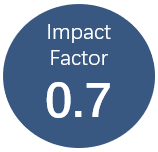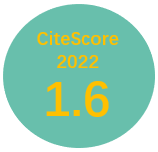On the road: Connectivity infrastructures in Southeast Asia
Vol 1, Issue 1, 2017
VIEWS - 1652 (Abstract) 1088 (PDF)
Abstract
This paper considers the problems surrounding the implementation of road infrastructure plans in a policy perspective. As the main pillar of regional connectivity, road networks provide the link across national markets, foster strong and sustainable economic growth, help meeting people’s basic needs, and promote trade and competiveness. It is argued that planning, implementing, and managing good transportation infrastructures poses a series of challenges that require competence, good governance, and the availability of funds. Such problems become more complex when road projects encompass different states and become transnational. The regional dimension of connectivity involves both opportunities and risks; a cooperative attitude by all parties is viewed as the best ingredient to achieve a positive balance. Since most countries cannot still rely on domestic resources, the paper stresses the role of virtuous policies in directing capital flows from abroad towards the infrastructural projects of Southeast Asia.
Keywords
Full Text:
PDFReferences
Abbas KA (2004). “Framework for assessing traffic impacts generated by mega complexes: A case study of San Stefano grand plaza, Egypt”. Impact Assessment and Project Appraisal, 22(4): 311–325. doi: 10.3152/147154604781765815.
Asian Development Bank (ADB) (2009). Infrastructure for a seamless Asia. Manila: Asian Development Bank and Tokyo: Asian Development Bank Institute.
Anderson JE and van Wincoop E (2004). “Trade costs”. Journal of Economic Literature, 42(3): 691–751.
Aschauer D (1989). “Is public expenditure productive?” Journal of Monetary Economics, 23(2): 177–200. doi: 10.1016/0304-3932(89)90047-0.
Association of Southeast Asian Nations (ASEAN) (2016). Master plan on ASEAN connectivity 2025. Jakarta: ASEAN.
Baldwin R, Okubo T (2006). “Heterogeneous firms, agglomeration and economic geography: spatial selection and sorting”. Journal of Economic Geography, 6(3): 323–346.
Bhattacharyay BN (2010). “Estimating demand for infrastructure in energy, transport, telecommunications, water and sanitation in Asia and the Pacific: 2010–2020”. ADBI Working Paper series no. 248. Tokyo: Asian Development Bank Institute.
Bivens J (2014). “The short- and long-term impact of infrastructure investment on employment and economic activity in the US economy”. EPI briefing paper #374. Washington DC: Economic Policy Institute.
Bougheas S, Demetriades PO and Morgenroth ELW (1999). “Infrastructure, transport costs and trade”. Journal of International Economics, 47(1): 169–189. doi: 10.1016/S0022-1996(98)00008-7.
Brooks DH and Go EC (2011). “Infrastructure’s role in sustaining Asia’s growth. ADB economic Working Paper series no. 294”. Manila: Asian Development Bank.
Donaldson D (2014) (Forthcoming). “Railroads of the Raj: Estimating the impact of transportation infrastructure”. American Economic Review, doi: 10.3386/w16487.
Eberts RW and McMillen DP (1999). Chapter 38: Agglomeration economies and urban public infrastructure. Handbook of Regional and Urban Economics, 3: 1455–1495. doi: 10.1016/S1574-0080(99)80007-8.
Égert B, Koźluk T and Sutherland D (2009). “Infrastructure and growth: Empirical evidence. OECD economics department Working Paper no. 685”. Paris: OECD Publishing. doi: 10.1787/225682848268.
Estache A and Fay M (2007). “Current debates on infrastructure policy”. Policy research Working Paper no. 4410. Washington DC: The World Bank–Poverty Reduction and Economic Management Vice-Presidency.
Faber B (2014). “Trade integration, market size and industrialization: Evidence from China’s national trunk highway system”. Review of Economic Studies, 81(3): 1046–1070. doi: 10.1093/restud/rdu010.
Fujita M, Krugman P and Venables AJ (1999). The spatial economy: Cities, regions, and international trade. Cambridge MA: MIT Press.
Fujita M and Thisse JF (2002). Economics of agglomeration—Cities, industrial location and regional growth. Cambridge: Cambridge University Press.
Garsous G (2012). “How productive is infrastructure? A quantitative survey”. ECARES Working Paper. Belgium: Universite libre de Bruxelles.
Goldman S (2013). ASEAN’s half trillion dollar infrastructure opportunity. Asia Economic Analyst, 13/18: 1–18.
Graham DJ (2007). “Agglomeration, productivity and transport investment”. Journal of Transport Economics and Policy, 41(3): 317–343.
Hoekman B and Nicita A (2008). “Trade policy, trade costs and developing country trade. Policy research Working Paper series. no. 4797”. Washington DC: World Bank–Development Research Group.
Ismail NW and Mahyideen JM (2015). The Impact of infrastructure on trade and economic growth in selected economies in Asia. ADBI working paper series. no. 553. Tokyo: Asian Development Bank Institute.
Kuroda H, Kawai M and Nangia R (2007). Infrastructure and regional cooperation, In: Bourguignon F, Pleskovic B (eds.). Annual World Bank conference on development economics 2007—Global: Rethinking infrastructure for development. Washington DC: World Bank. p. 235–259.
Limão N and Venables AJ (2001). “Infrastructure, geographical disadvantage, transport costs and trade”. The World Bank Economic Review, 15(3): 451–479. doi: 10.1093/wber/15.3.451.
Maguire GB, Roberts T, Fabo J, et al. (2015). ASEAN: The next horizon. Melbourne: ANZ.
McKinsey Global Institute (2016). Bridging global infrastructure gaps. New York: McKinsey & Company. http://www.mckinsey.com/industries/capital-projects-and-infrastructure/our-insights/bridging-globalinfrastructure-gaps.
McKinsey Global Institute (2014). Southeast Asia at the crossroads: Three paths to prosperity. New York: McKinsey & Company.
Mcloughlin C and Batley R (2012). The effects of sector characteristics on accountability relationships in service delivery. Working Paper 350. London: Overseas Development Institute.
Melitz MJ and Ottaviano GIP (2008). “Market size, trade and productivity”. Review of Economic Studies, 75(1): 295–316. doi: 10.3386/w11393.
Nocke V (2006). “A gap for me: Entrepreneurs and entry”. Journal of the European Economic Association, 4(5): 929–956. doi: 10.1162/JEEA.2006.4.5.929.
Nordås HK and Piermartini R (2004). “Infrastructure and trade”. Staff Working Paper ERSD-2004-04. Genève: World Trade Organization.
Organisation for Economic Co-operation and Development (OECD) (2016). Economic outlook for Southeast Asia, China and India 2016: Enhancing regional ties. Paris: OECD Publishing.
Rafiqui PS (2003). Institutional perspectives on the road and forestry sectors in Laos: Institutional development and Sida support in the 1990s. Stockholm: Swedish International Development Cooperation Agency (Sida).
Rimmer PJ and Dick H (2012). Chapter 7—Economic space for transnational infrastructure: Gateways, multimodal corridors and special economic zones. In: Bhattacharyay BN, Kawai M, Nag RM (eds.). Infrastructure for Asian connectivity. UK: Edward Elgar Publishing and Manila: Asian Development Bank. p.217–253. doi: 10.4337/9781781003138.00016.
Seethepalli K, Bramati MC and Veredas D (2008). “How relevant is infrastructure to growth in East Asia?”. Policy Research Working Paper No. 4597. Washington DC: The World Bank–Operations and Policy Division of East Asia & Pacific Sustainable Development Department. doi: 10.1596/1813-9450-4597.
Straub S, Vellutini C and Warlters M (2008). “Infrastructure and economic growth in East Asia”. Policy Research Working Paper 4589. Washington DC: The World Bank–Policy Unit of East Asia and Pacific Sustainable Department. doi: 10.1596/1813-9450-4589.
Wales J and Wild L (2012). The political economy of roads: An overview and analysis of existing literature. London: Overseas Development Institute.
World Bank (2007). A decade of action in transport: An evaluation of World Bank assistance to the transport sector, 1995–2005. Washington DC: The World Bank.
World Trade Organization (WTO) (2011). Trade patterns and global value chains in East Asia: From trade in goods to trade in tasks. Geneva: World Trade Organization.
Yoshino N and Pontines V (2015). “The “highway effect” on public finance: Case of the STAR highway in the Philippines“. ADBI Working Paper series no. 549. Tokyo: Asian Development Bank Institute.
Yoshino N and Abidhadjaev U (2015). “An impact evaluation of investment in infrastructure: The case of the railway connection in Uzbekistan“. ADBI working paper series no. 548. Tokyo: Asian Development Bank Institute.
Zen F and Regan M (2014). Financing ASEAN connectivity. Research project report no. 15. Jakarta: Economic Research Institute for ASEAN and East Asia (ERIA).
Zhang W (2015). An Asian perspective on the future of transport infrastructure. Keynote speech at the World Road Congress; Seoul, Republic of Korea, 4 November 2015, www.adb.org/print/node/176030.
DOI: https://doi.org/10.24294/jipd.v1i1.6
Refbacks
- There are currently no refbacks.
Copyright (c) 2017 Juan Carlos Martinez Oliva

This work is licensed under a Creative Commons Attribution-NonCommercial 4.0 International License.

This site is licensed under a Creative Commons Attribution 4.0 International License.










